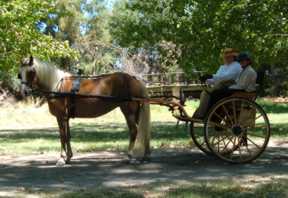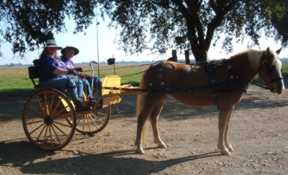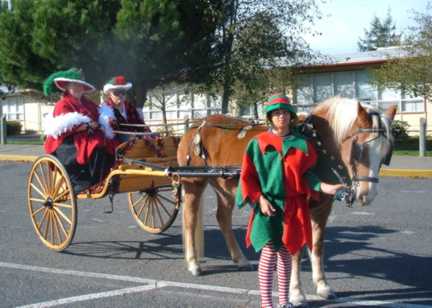|
Driving
or Riding on Asphalt or Concrete |
We assume that asphalt is much
harder on hooves than it actually
is. I've done lots of riding
barefoot on blacktop, and found
that it's very easy on my horses
feet.
Trimming clinician Pete Ramey's
wife, Ivy Ramey, has experience
with barefoot driving horses
and said their performance barefoot
is awesome. There are pictures
of Ivy's draft horse in Pete's
book. The pictures on this page are of a clients Hafflingers. These horses do almost all of their conditioning on paved roads, barefoot.
Why would
we need boots on asphalt?
The only real long-term reason
is to protect a tender sole
from gravel and for special needs horses such as police patrol horses. For most peoples needs, boots are only necesssary to protect transitioning feet or to help absorb concussion.

|
   |
HOOF
WEAR
I've heard people worry about
hoof wear with driving and parade
horses, and the analogy I made
was to running shoe wear. I've
run hundreds of miles on pavement,
and occasionally qualify for
"Clydesdale class"
in marathons and even with
my extra weight, it takes at
least a month of serious running
to wear a significant amount
of sole off on my shoes, and
the shoes *still* last 3 to
5 months before the tread is
destroyed.
I'm a big, clumsy
runner, and I understand that horses
are larger, but hooves are tougher
than rubber, and they grow.
Most driving horses jog or walk
on level surfaces, and they
seldom do it for 8 to 10 hours
a day, so the wear isn't significant after the feet
have gotten in condition for
it.
The horse in these pictures always needs a trim at 5 weeks, no matter how much road work they've done. |
|
TRACTION
Barefoot traction on asphalt
is excellent compared to shoes with cleats, and boots can improve that traction. |
| |
SHOCK ABSORPTION
The hoof absorbs concussion
so well on asphalt that it amazes
me... Gavilan has always been
sensitive to concussion, and
he'd like to canter on asphalt.
When I was running, I found
that asphalt transmitted less
concussion than many hard packed
dirt trails that appeared soft,
and sometimes "runs" softer
than packed sand tracks. I was running 30
to 50 miles a week on trails,
so I was hypersensitive to footing.
The horse in these pictures does lots of milage on asphalt and if it stressed her, it would show up as swelling and heat in the pastern and fetlock, as well as in "road founder" rings in the wall. This owners horses have perfect walls, tight legs and super feet.
And if concussion is a concern, hoof boots provide excellent shoch absorbtion, much netter than anything available in a metal or synthetic shoe. |
 |
HEAT
The amount of heat transferred
from asphalt to a live hoof
is insignificant when compared
to the amount of heat transferred
by metal shoes, so heat alone
isn't a good reason to avoid
barefoot.
Booting
can be used for sole sensitivity and to insulate the foot from hot asphalt.. |
|
|
|







